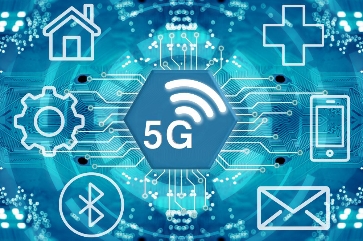
5G technology is set to revolutionize telecommunications and network management, enabling faster, more reliable, and more efficient services. By leveraging advanced features like ultra-low latency, massive device support, and network slicing,
telecom operators are better equipped to manage the increasing demands of connectivity in an increasingly digital world. As businesses, cities, and industries adopt 5G, they will unlock new applications and capabilities, driving innovation and transforming the way we connect and communicate.







5G technology is fundamentally transforming telecommunications and network management by introducing a range of capabilities that enhance connectivity, improve performance, and enable innovative applications. Here’s a detailed overview of how 5G impacts telecommunications and network management:
### Key Features of 5G in Telecommunications
1. **Higher Data Speeds:**
– **Fast Connectivity:** 5G networks can deliver data rates of up to 10 Gbps or more, significantly faster than previous generations. This improved speed benefits applications requiring large data transfers, such as video streaming, virtual reality (VR), and augmented reality (AR).
2. **Ultra-Low Latency:**
– **Real-Time Communication:** 5G reduces latency to as low as 1 millisecond, making it suitable for applications requiring immediate response, such as autonomous vehicles, remote surgeries, and real-time gaming.
3. **Massive Device Connectivity:**
– **IoT Enablement:** 5G supports a massive number of connected devices (up to 1 million devices per square kilometer), making it ideal for IoT applications. This capability can significantly enhance smart cities, smart homes, and industrial IoT (IIoT) deployments.
4. **Network Slicing:**
– **Customized Services:** 5G allows for the creation of virtualized networks, or “slices,” that can be tailored for specific applications or services. This means that network resources can be allocated dynamically based on demand, ensuring quality of service for critical applications.
5. **Enhanced Reliability and Security:**
– **Improved Network Resilience:** With advanced technologies such as edge computing, 5G networks can achieve greater reliability and security. The decentralized nature of edge computing reduces the risk of network bottlenecks and vulnerabilities.
### Applications of 5G in Telecommunications and Network Management
1. **Advanced Network Management:**
– **Dynamic Resource Allocation:** Network operators can adjust bandwidth and resources in real time based on traffic demands, enhancing overall network efficiency.
– **Predictive Maintenance:** Using AI and machine learning, network managers can analyze data from network components to predict failures and schedule maintenance proactively.
2. **Enhanced Network Performance Monitoring:**
– **Real-Time Analytics:** 5G enables real-time monitoring of network performance metrics (e.g., latency, throughput, and downtime) through advanced analytics, allowing for quicker adjustments and troubleshooting.
– **Quality of Experience (QoE):** Operators can monitor user experience directly, enabling adjustments to improve service delivery based on usage patterns.
3. **Edge Computing:**
– **Low-Latency Applications:** By processing data closer to the source (at the edge of the network), 5G reduces latency for applications that require quick response times, such as gaming, AR/VR, and autonomous services.
– **Localized Services:** Industries can deploy localized services that minimize data transfer times and optimize resource usage, enhancing overall network performance.
4. **Expanded IoT Capabilities:**
– **Smart Cities:** Cities can deploy a range of connected devices (e.g., smart streetlights, traffic signals, waste management systems) to enhance urban infrastructure, improve services, and reduce costs.
– **Smart Healthcare:** Remote monitoring of patients using IoT devices is enhanced through 5G networks, enabling real-time health data transmission for better patient outcomes.
5. **Support for Autonomous Vehicles:**
– **Vehicle-to-Everything (V2X) Communication:** 5G provides the necessary infrastructure for V2X communication between vehicles, infrastructure, and pedestrians, enhancing safety and efficiency in transportation.
– **Real-Time Traffic Management:** Autonomous vehicles relying on real-time data can communicate with traffic management systems to optimize routes and reduce congestion.
6. **Telecommunication as a Service (TaaS):**
– **Virtualized Network Functions (VNFs):** With network slicing and virtualization, telecom operators can offer specific services tailored to different customers, such as enterprises requiring high reliability or specific security features.
– **Managed Services:** Companies can outsource specific network management functions to third-party providers, allowing them to focus on their core business aspects.
7. **Improved Customer Experience:**
– **Personalized Services:** Using data analytics, telecoms can tailor services to individual user needs, from customized data plans to targeted promotions.
– **Enhanced Troubleshooting:** With real-time visibility into network performance, service providers can address customer complaints more effectively, improving overall satisfaction.
8. **Seamless Integration of Fixed and Mobile Networks:**
– **Converged Networks:** 5G enables better integration between fixed and mobile networks, providing users with a consistent experience across various devices and connection types.
– **Enhanced Home Connectivity:** Fixed 5G wireless access can provide high-speed internet to homes where traditional lines may not be feasible, enhancing the digital divide.
### Challenges and Considerations
While the benefits of 5G in telecommunications and network management are substantial, several challenges must be addressed:
1. **Infrastructure Investment:**
– Significant capital investment is required to build and maintain 5G infrastructure, including small cells, fiber optics, and new hardware.
2. **Regulatory and Compliance Issues:**
– Navigating regulatory frameworks regarding spectrum allocation and deployment can be complex, especially in regions with existing telecom agreements.
3. **Interference and Coverage:**
– 5G signals are more susceptible to physical barriers compared to previous generations, requiring careful planning for cell placement and coverage.
4. **Security Concerns:**
– With increased connectivity comes the potential for greater security vulnerabilities. Operators must implement advanced cybersecurity measures to protect user data and network integrity.
5. **Skill Gaps:**
– As networking becomes more complex, organizations may face challenges in finding skilled professionals who can manage 5G implementations and maintain the associated technologies.


Leave a Reply